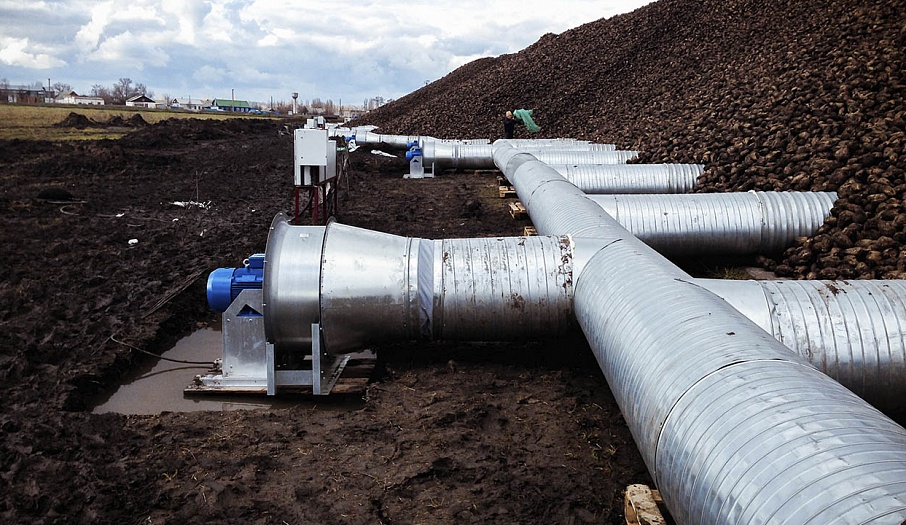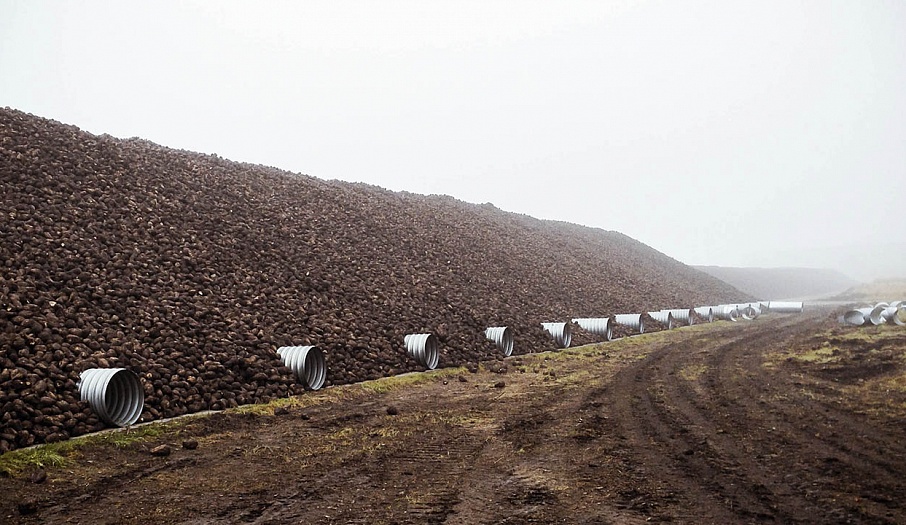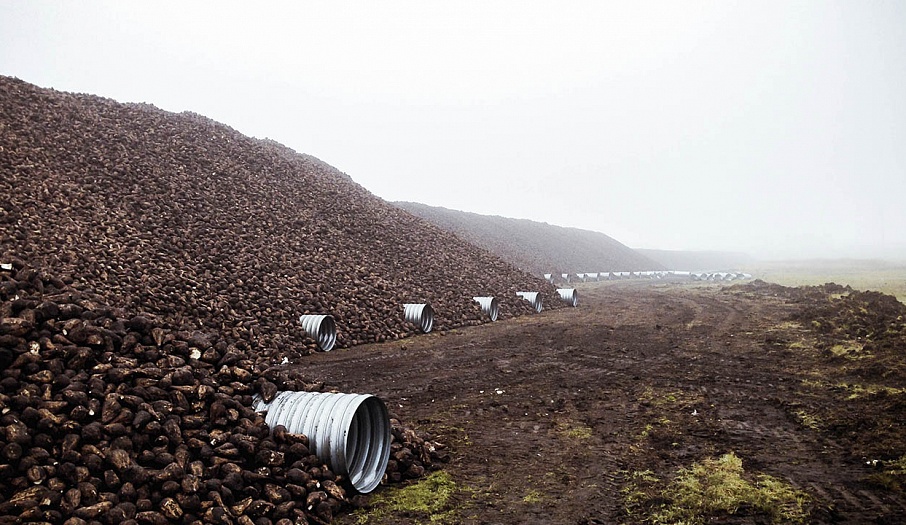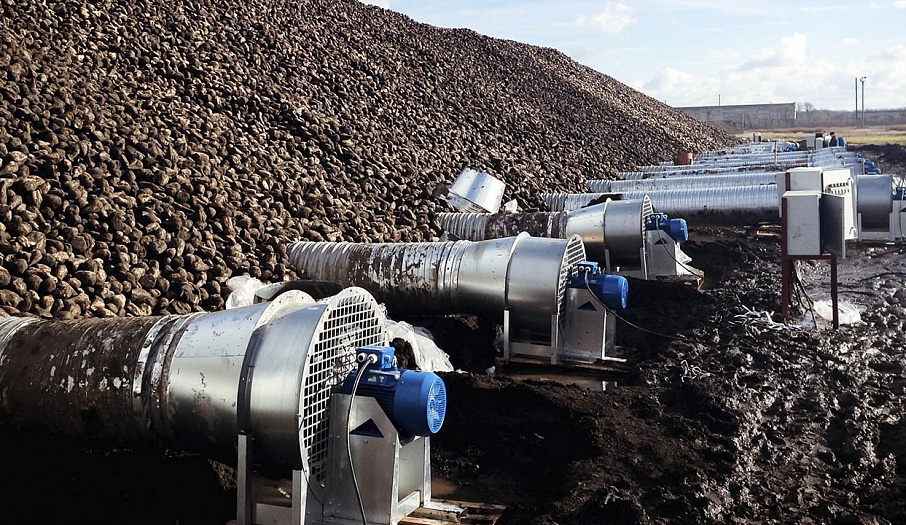Technology
If beets are stored in piles, it is impossible to avoid natural loss. Aside from the loss of sucrose, there is also a possibility of the loss of produce because of bacteria and mold. The use of a forced blowing system and the freezing of beets with the natural cold from fans significantly decreases culling rates.
Bulk storage of beets
Forced blowing is one of the most efficient ways of decreasing the temperature in piles. It is used when the temperature in piles is 3°C higher than the air temperature.
In a beet pile, field air circuits are placed either on a surface or in the soil. The side-by-side configuration of ventilation is the most common. Air circuits are located at a distance from one another, at roughly 1.5m of the pile height. The volume of air required for ventilation is calculated based on 30-60 m3/h per 1t of beets.
Forced blowing is applied in the warm autumn period, mainly at night. In order to avoid the partial freezing of root crops, it is recommended to stop ventilating if the outside temperature drops below 0°С.
Also, in order to avoid beet withering when forced blowing is applied, it is recommended to humidify the air that is being delivered by fans. Water consumption per one axial fan is 40-50kg/h. This helps to decrease the temperature in the piles more intensively and maintain the optimal level of air humidity for beets (90-94%).
In areas where winters are always cold, it is recommended to freeze beets with natural cold. At the same time, fans provide piles with freezing air from the outside over the course of several days. Beets are frozen until their temperature reaches -12/-15°C; that said, their roots freeze up. To avoid thawing, piles of frozen beets should be covered. Frozen beets can be stored until the end of May with virtually no losses.
Advantages of an aeration system for beet piles:
- Piles can be either ventilated or frozen.
- Blowing air creates the ideal temperature and moisture in a pile. It decreases rotting and prevents the excessive heating and burning of produce inside a pile.
- Decrease in the loss of sucrose concentration from 0.018-0.022% a day to 0.012-0.014% a day.
- Storage life increases to 100 days when produce is ventilated and to 260 days when it is frozen.
- This system can be used in piles of any length and up to 9 meters in height.
Completed projects
more Region: Spitsyno Village, Shatrovsky District, Kurgan Region
Client: “Grekhov” Family Farm



